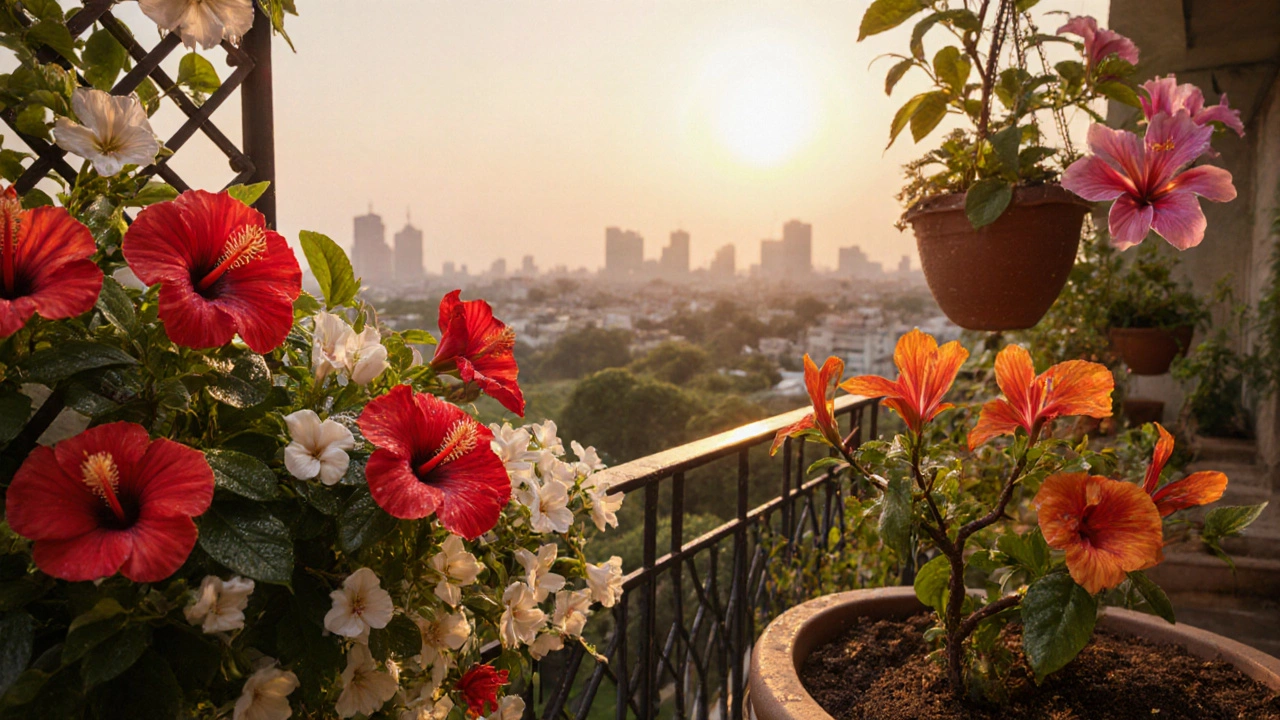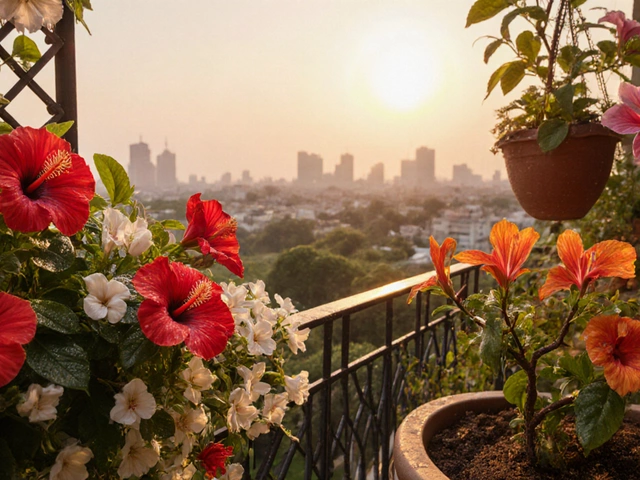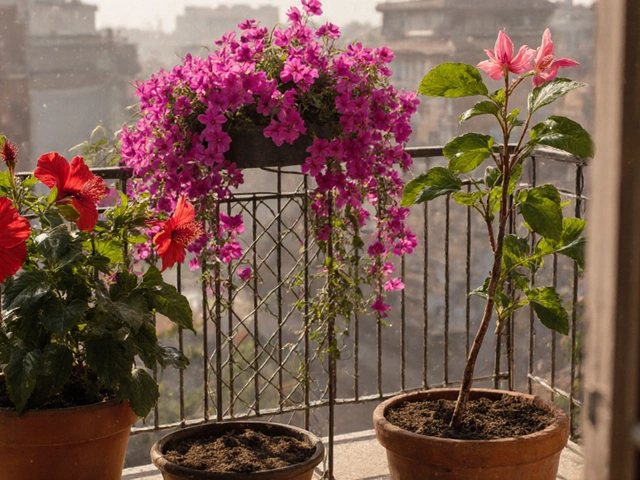Evergreen flowering plants are the secret sauce for a garden that never looks dormant. If you’ve ever wished for color in December, February or the scorching May heat, you’re looking for year round blooming flowers India can deliver. This guide walks you through what makes a plant a true year‑round bloomer, which species thrive across India’s diverse climates, and how to keep them thriving without constant babysitting.
What Makes a Flower a True Year‑Round Bloomer?
In botanical terms, a plant that flowers continuously must meet two conditions: it retains foliage all year (evergreen habit) and it has a growth cycle that isn’t locked to a single season. Climate plays a huge role-India’s range from Himalayan chill to tropical humidity means a species that blooms all year in Kerala might struggle in Delhi. Look for plants that tolerate a wide temperature band (15‑35°C) and can handle both monsoon rains and dry spells.
Top Evergreen Flowering Plants for Indian Gardens
Below are eight reliable performers. Each entry starts with a micro‑data definition so search engines can easily recognize the entity.
- Hibiscus rosa‑sinensis is a tropical shrub that produces large, showy blooms in shades of red, pink, yellow and white throughout the year in warm climates. In coastal cities like Mumbai and Kochi, it’s practically a street‑corner staple. It loves full sun, moderate watering, and well‑drained loam.
- Jasminum multiflorum is a vigorous climber known for its tiny white, highly fragrant flowers that appear nearly every month. It thrives on trellises, needs partial shade during peak summer, and recovers quickly after pruning.
- Plumeria (Frangipani) is a succulent‑like tree that yields thick, aromatic blossoms in white, pink, yellow or red, with overlapping bloom cycles that keep at least one branch in flower. Perfect for dry, sunny spots in Rajasthan or Gujarat; it tolerates drought once established.
- Gardenia jasminoides is an evergreen shrub producing glossy leaves and creamy, intensely scented flowers that can repeat from spring to winter in humid regions. It prefers slightly acidic soil, consistent moisture, and filtered sunlight.
- Crossandra infundibuliformis is commonly called the firecracker flower; it bears vibrant orange, red or yellow clusters almost continuously in tropical and subtropical zones. It enjoys partial shade and regular watering, making it a favorite for shaded balconies.
- Mirabilis jalapa is the Four‑O’Clock plant, named for its habit of opening late afternoon; in India it often blooms all year in warm areas, with pink, white or yellow blooms. It tolerates poor soils and occasional drought.
- Bougainvillea is a thorny vine that produces papery bracts in purple, magenta, orange or white; while its main flush is summer, it can sprout new bracts in cooler months in regions like Pune. Full sun and well‑drained soil are a must.
- Cassia alata (Senna) is a fast‑growing shrub with bright yellow ‘candle‑like’ flowers that appear nearly year‑round in the sub‑tropical belts of the Deccan plateau. It thrives in sunny spots and tolerates both dry and moist conditions.
Growing Conditions Checklist for Year‑Round Blooms
Before you plant, evaluate these five factors. The checklist helps you match the right species to your micro‑climate.
- Sunlight exposure: Most evergreen bloomers need at least 5‑6hours of direct sun. Shade‑tolerant options like Crossandra can handle dappled light.
- Soil type and pH: Well‑draining loam with pH 6‑7 suits Hibiscus, Gardenia, and Plumeria. Sandy soils work for Bougainvillea.
- Water regime: Establish plants with regular watering (once a week). Once rooted, many (e.g., Plumeria, Mirabilis) need less.
- Temperature range: Aim for species that tolerate 15‑35°C. In colder zones (e.g., Himachal), grow in containers and bring indoors during winter.
- Maintenance effort: Prune after each major bloom to stimulate fresh shoots. Fertilize monthly with a balanced NPK (10‑10‑10) for sustained vigor.
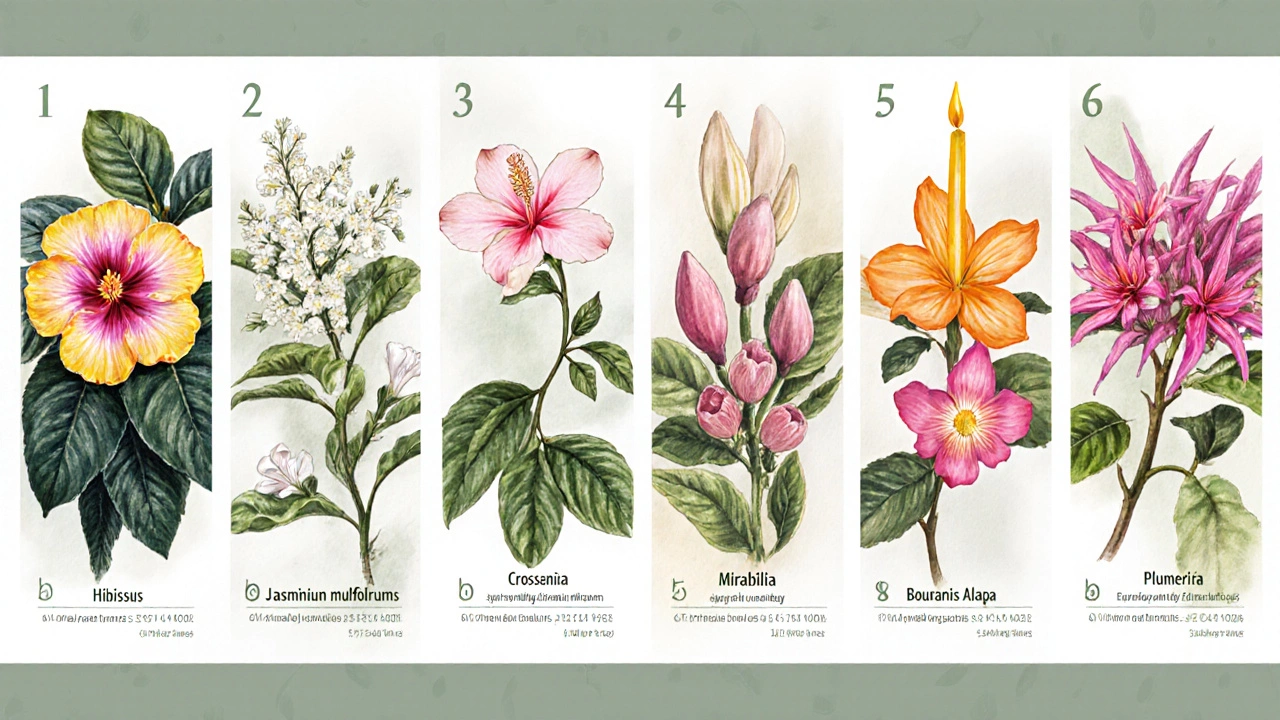
Comparison Table - Key Attributes
| Flower | Sunlight | Water | Soil | Typical Bloom Period |
|---|---|---|---|---|
| Hibiscus rosa‑sinensis | Full sun | Moderate | Loam, pH6‑7 | All year (warm zones) |
| Jasminum multiflorum | Partial sun | Regular | Well‑drained, slightly acidic | Jan‑Dec |
| Plumeria | Full sun | Low once established | Sandy, well‑drained | Continuous in tropics |
| Gardenia jasminoides | Filtered light | Consistent moisture | Acidic, organic‑rich | Oct‑Mar, plus sporadic |
| Crossandra infundibuliformis | Partial shade | Regular | Loam, pH5.5‑6.5 | Almost year‑round |
| Mirabilis jalapa | Full sun to light shade | Low to moderate | Any, tolerates poor | Spring‑Winter |
| Bougainvillea | Full sun | Low once established | Sandy, well‑drained | Peak summer, occasional off‑season |
| Cassia alata | Full sun | Moderate | Loam, pH6‑7 | All year in subtropics |
Common Pitfalls & Pro Tips
Even the hardiest evergreen can falter if you miss a few basics.
- Over‑watering: Roots rot quickly in heavy soils. Use a saucer under pots and let the top inch dry before the next water.
- Neglecting fertilizer: A light dose of organic compost every two months fuels repeat blooming.
- Improper pruning: Cutting too late in the monsoon can erase next month’s buds. Prune early in the dry season (Oct‑Nov).
- Ignoring pests: Aphids and whiteflies love hibiscus and gardenia. Spray neem oil weekly during peak infestations.
- Wrong location: Bougainvillea will turn limp in shaded balconies. Ensure at least 6hours of direct light.
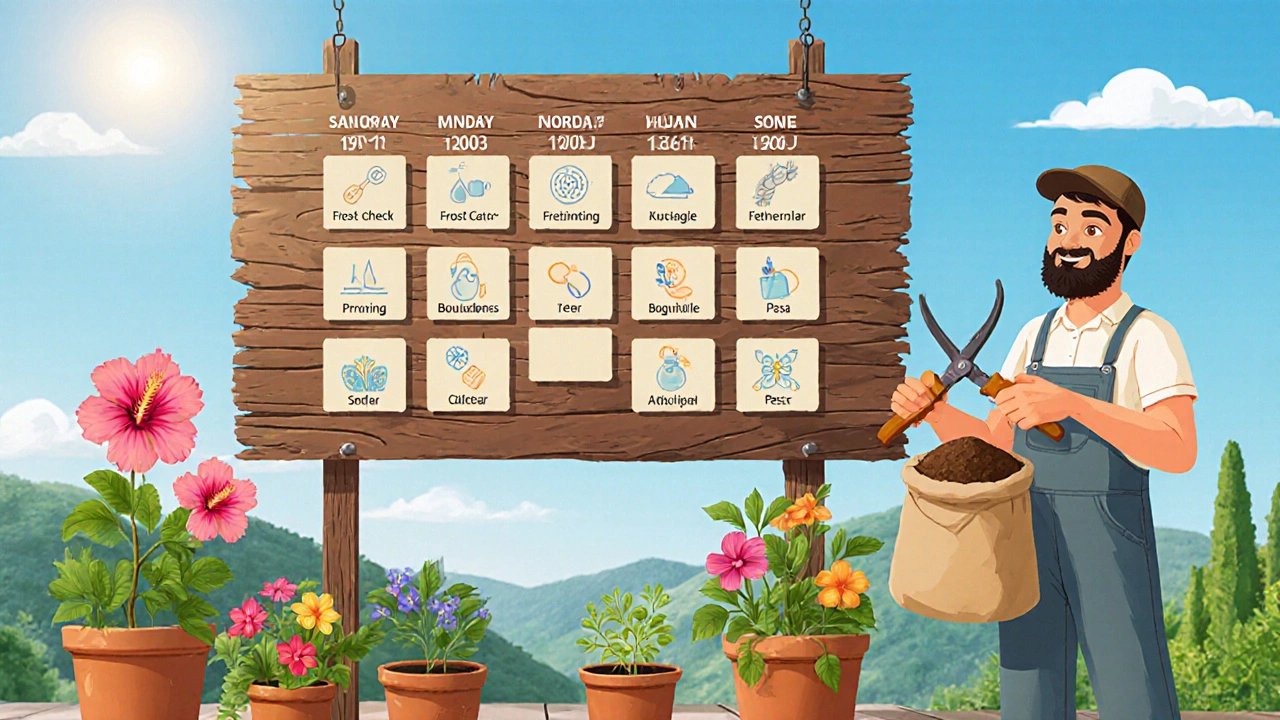
Seasonal Maintenance Calendar
Keep a simple calendar on your fridge. Follow these month‑by‑month actions for most Indian climates.
| Month | Task |
|---|---|
| January | Check for frost‑sensitive plants in northern hill stations; add mulch. |
| February | Start light pruning of hibiscus and gardenia. |
| March | Begin monthly organic fertilizer applications. |
| April‑May | Increase watering frequency for potted plants; monitor for leaf scorch. |
| June‑July (Monsoon) | Reduce watering; ensure good drainage to avoid root rot. |
| August | Apply neem oil if pests appear; prune after main monsoon flush. |
| September | Prepare soil for new cuttings; start propagation of crossandra. |
| October | Major pruning for bougainvillea and cassia; refresh mulch. |
| November‑December | Monitor night temperatures; bring container plants indoors if needed. |
Choosing the Right Plant for Your Space
Match the plant’s habit to your garden’s layout:
- Balcony or rooftop: Opt for compact growers like Crossandra, Mirabilis, or potted hibiscus.
- Ground beds in sunny zones: Plant bougainvillea, cassia, or plumeria for striking vertical interest.
- Shaded verandas: Gardenia and jasmine love filtered light.
- Water‑scarce regions: Plumeria and bougainvillea survive with minimal irrigation.
Frequently Asked Questions
Which evergreen flower can survive cold winters in northern India?
Gardenia jasminoides, when grown in a sheltered pot and brought indoors during sub‑zero nights, can bloom year‑round even in Delhi’s winter.
Do I need to fertilize every month?
A light dose of balanced NPK (10‑10‑10) or well‑rotted compost every 4‑6 weeks keeps the plants vigorous without burning the roots.
Can I grow these plants in a raised garden bed?
Absolutely. Just ensure the bed has good drainage and a mix of garden soil, sand, and compost (2‑1‑1 ratio). This suits hibiscus, cassia and most others.
How often should I prune hibiscus?
Trim back 20‑30% after each major flowering wave, usually every 2‑3 months in the hot season, to encourage fresh buds.
Is any of these flowers toxic to pets?
Most listed species are non‑toxic, but bougainvillea bracts can cause mild stomach upset if ingested in large amounts.
With the right choices and a bit of routine care, you can turn any Indian garden, balcony or rooftop into a perpetual splash of colour. Pick the species that fit your climate, soil and light, follow the checklist, and enjoy blossoms that never take a season off.
